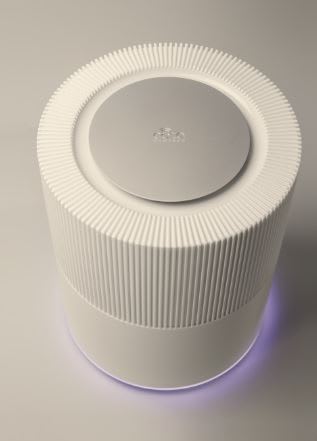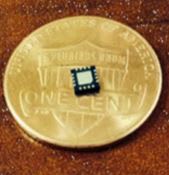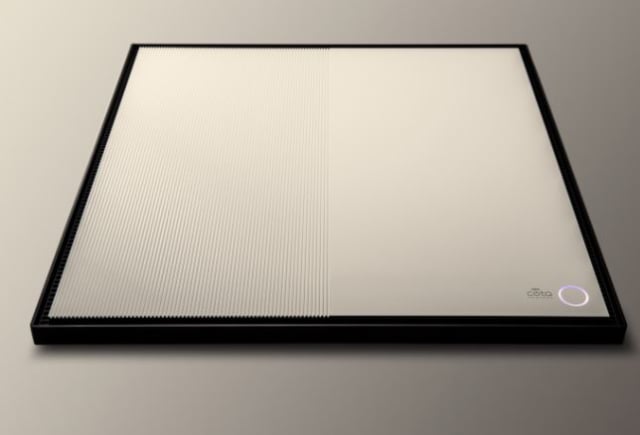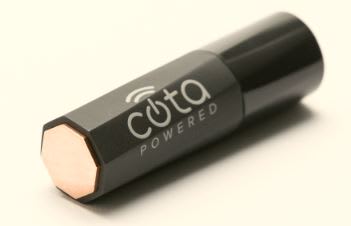Originally posted by Tom Lombardo on Engineering.com
Tesla's Dream
Nikola Tesla, the eccentric genius for whom two modern electric vehicle companies have been named, envisioned a wireless power grid that could transmit electrical energy through the air. Although his idea is technically feasible, it turns out to be highly inefficient over long distances. It's fine for wireless communication, where a massive transmitting antenna pumps out thousands of watts over many kilometers to radio receivers that only need to gather a few milliwatts of the signal - about one one-millionth of the power transmitted. But if you scale that up to an antenna delivering several thousand watts to each home in a city, you can see how insanely powerful the transmitter would have to be, not to mention the unacceptable inefficiency of the whole system.
On the other hand, energy transfer can achieve 90% efficiency when the distance is very small, making Tesla's concept of inductive coupling perfectly fine for delivering power to passive RFID tags and IoT devices that don't have batteries, as well as charging personal electronics and even electric vehicles. We've all seen the charging pads that allow us to simply place our tablets and phones on a special surface, saving us from the drudgery of actually plugging in our mobile devices at home. (First World Problems, right?) But what about charging up the phone at the airport, in a cafe, or at school? The only choice is to find an available outlet and sit there for 20 minutes or so - or carry a spare battery that acts as a charger. (I know - technically still a FWP, but a more pressing one.)
A Modern Variation
Two years ago, Ossia introduced the world to its wireless power technology. Unlike Tesla's inductive coupling, which sends power in all directions equally, Ossia's Cota® (Charging Over The Air) technology pinpoints the receiving device and transmits power directly to it through a combination of line-of-sight and reflective paths. It does this through a two-way communication system, where the receiving device lets the transmitter know its location. The transmitter can then send power only to the device, ensuring that power isn't wasted by bouncing around the room and eventually being absorbed by the walls and furniture. Ossia has made several improvements since introducing the design, but first, let's look at the base technology.

How It Works
A product that charges with Cota has a tiny receiver chip inside.

|
Using a 2.4 GHz channel - the same frequency used for WiFi and Bluetooth - a device that's low on power sends out an omnidirectional beacon. The power transmitter has hundreds of tiny, directional antennas, which triangulate the exact position of the product. It then sends power to the device through the same exact paths. The two-way handshake occurs one hundred times every second, so even as the product moves around the room, it continuously receives power from the transmitter.
|

The Cota system includes cloud-based software that allows users to customize various parameters, such as prioritizing certain devices. Receivers only send a request for power when they need it, while the Cota transmitter stays in an ultra-low-power standby mode until awakened by a beacon.
Safety
Wireless networking frequencies and power levels have been deemed safe for people, plants, and animals. Cota is, in theory, even safer than WiFi or Bluetooth, since wireless networking signals are omnidirectional, where Cota won't attempt to transmit power through a person since it can't "see" the device if the person is in the path. A third-party testing agency has confirmed that Cota technology complies with FCC regulations for WiFi and Bluetooth. (Currently, there are no regulations for wireless power transmission.)
Power Levels
Cota's power reception is limited to one Watt of power at any given time, due to FCC limits. That's less than one-tenth of the power provided by a typical cell phone charger, which may not be such a big deal since it's constantly trickle-charging the device while it's in range. (I suppose that depends on the threshold at which the product asks for power.) But that single Watt is distributed among all the devices that a transmitter serves - up to thirty of them. To increase range and charging capacity, up to four Cota Tiles - transmitters mounted in ceiling tiles - can be combined into arrays, effectively quadrupling the available power for a given device.

Improvements
Ossia has made a number of upgrades to the original Cota design. Transmitter weight has been reduced by 40%, and cost by 25%. Earlier designs provided a range of about two meters (six feet), while the new version reaches nine meters (thirty feet). The first Cota transmitters required 450 Watts of AC power; that's been reduced to 140 Watts. Ossia says that the transmitter is dormant most of the time, only waking up and using power when it's requested. Still, 140 Watts of input compared to one Watt delivered shows just how inefficient it is to send power wirelessly. Convenience can be very costly.
Reality Check
Ossia makes a couple of claims that I think are overly optimistic, or at least in need of clarification. For example, the company claims that wireless recharging will result in a battery that lasts forever (in fact, they even make a product called the Forever Battery) but all batteries eventually lose their ability to retain a charge - typically after ten years or so. On the other hand, the availability of continuous recharging through the air may allow low-power devices to run entirely on supercapacitors, eliminating the need for batteries in those products. The convergence of low-power electronics and high-capacity supercaps could give us devices whose portable power sources can last as long as the products themselves.

Ossia also says that its technology will lead to the end of power cords. Let's see - if a transmitter needs 140 Watts in order to deliver one Watt to a phone, providing 100 Watts to a TV set puts the transmitter in the 14kW range - not exactly feasible in a residential setting. In a few generations, the power consumption of appliances will decrease, and I'm guessing the efficiency of the Cota transmitters will increase along the same line. A day may come when power cords are no longer necessary, but it is not this day, nor any day in the near future.
Bottom Line
Tightening the beam and transmitting power only to the device, rather than sending power omnidirectionally, certainly reduces the waste and improves the safety of wireless power and charging, but as Chief Engineer Scott was fond of saying, "You cannot change the laws of physics." A radio wave's power decreases with the square of distance, so doubling the distance between transmitter and receiver causes the power to drop by a factor of four. That will always be the limitation of wireless power transfer.
It's an interesting concept and I do believe it has its place, but it'll be a while before wireless power and charging becomes the norm. And for high-power appliances, it could be a very long wait. Don't cut your cords just yet.
Here's Ossia's promotional video:
Images and video courtesy of Ossia
